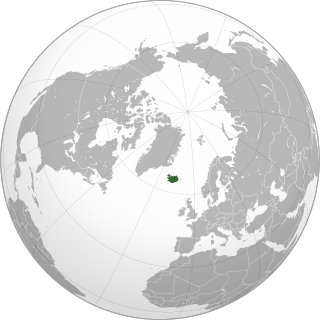A toll-free telephone number or freephone number is a telephone number that is billed for all arriving calls. For the calling party, a call to a toll-free number from a landline is free of charge. A toll-free number is identified by a dialing prefix similar to an area code. The specific service access varies by country.
A telephone numbering plan is a type of numbering scheme used in telecommunication to assign telephone numbers to subscriber telephones or other telephony endpoints. Telephone numbers are the addresses of participants in a telephone network, reachable by a system of destination code routing. Telephone numbering plans are defined in each of the administrative regions of the public switched telephone network (PSTN) and in private telephone networks.

The Australian telephone numbering plan governs the allocation of telephone numbers in Australia. It has changed many times, the most recent major reorganisation by the Australian Communications and Media Authority taking place between 1994 and 1998.

Telephone numbers in the People's Republic of China are administered according to the Chinese Telephone Code Plan. The structure of telephone numbers for landlines and mobile service is different. Landline telephone numbers have area codes, whereas mobile numbers do not. In major cities, landline numbers consist of a two-digit area code followed by an eight-digit local number. In other places, landline numbers consist of a three-digit area code followed by a seven- or eight-digit local number. Mobile phone numbers consist of eleven digits.
In Argentina, area codes are two, three, or four digits long. Local customer numbers are six to eight figures long. The total number of digits is ten, for example, phone number (11) 1234-5678 for Buenos Aires is made up of a 2-digit area code number and an 8-digit subscriber's number, while (383) 123-4567 would be an example of a Catamarca number.

Numbers on the Irish telephone numbering plan are regulated and assigned to operators by ComReg.

The dialling plan for mobile networks and new landline operators is closed; all subscriber numbers must be dialled in full. For landline numbers starting with 02, the dialling plan used to be open; the trunk digit and area code could be omitted if the caller was in the same area code as the callee. However, starting May 3, 2008, all landline numbers must be dialled in full.
Telephone numbers in Oceania use a variety of area codes to denote their location along with their own area code depending on the country's geographic makeup. They also have other prefixes to denote different types of mobile services and international calls. There are exceptions because of regional variations and time zones.

Telephone numbers in Malaysia are regulated by the Malaysian Communications and Multimedia Commission (MCMC).

Telephone numbers in the Philippines follow an open telephone numbering plan and an open dial plan. Both plans are regulated by the National Telecommunications Commission, an attached agency under the Department of Information and Communications Technology (DICT).

Telephone numbers in Israel consist of an area code and a subscriber number. The dial plan type in Israel is closed, and "0" is the internal Trunk prefix in Israel. Israel's country calling code is +972.

Telephone numbers in the Republic of China (Taiwan) use a system of area codes, beginning 02 to 08. The leading digit(s) following the area code denote the network operator (Chunghwa Telecom and its competitors). Mobile numbers begin 09. The international code for calls into Taiwan is 886.

Telephone numbers in India are administered under the National Numbering Plan of 2003 by the Department of Telecommunications of the Government of India. The numbering plan was last updated in 2015. The country code "91" was assigned to India by the International Telecommunication Union in the 1960s.
Telephone numbers in Canada follow the fixed-length format of the North American Numbering Plan (NANP) of a three-digit area code, a three-digit central office code, and a four-digit station or line code. This is represented as NPA NXX XXXX.

Telephone numbers in Iceland are seven digits long and generally written in the form xxx xxxx or xxx-xxxx and the E.123 format specifies +354 xxx xxxx from abroad since the country code is +354.
National conventions for writing telephone numbers vary by country. The International Telecommunication Union (ITU) publishes a recommendation entitled Notation for national and international telephone numbers, e-mail addresses and Web addresses. Recommendation E.123 specifies the format of telephone numbers assigned to telephones and similar communication endpoints in national telephone numbering plans.

Telephone numbers in Georgia consist of 9 digits and follow a closed numbering plan in which the initial 2 or 3 digits indicate the service or area code and the remaining 6 or 7 digits identify the subscriber.










